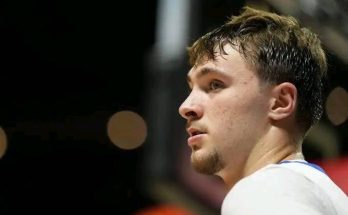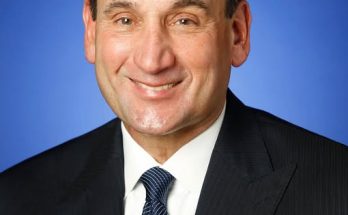Here’s an in-depth spotlight on two recent University of Kentucky Wildcats who successfully transitioned into the NBA following the 2025 Draft. While there are numerous Kentucky alumni pursuing pro basketball careers, these two players—Amari Williams and Koby Brea, both draftees—embody remarkable journeys and embody the Wildcats’ enduring legacy in the NBA.
Amari Williams, a seven-foot center from Nottingham, England, took an unconventional path to UK. After showing defensive dominance at Drexel—where he earned three consecutive Colonial Athletic Association Defensive Player of the Year honors—he transferred to Kentucky for the 2024–25 season (aseaofblue.com).
In Lexington, Williams flourished. Over 36 starts, he posted averages of:
- 10.9 points per game
- 8.5 rebounds per game
- 56.1% field goal efficiency
- Led the Wildcats with 115 assists
- Top rebounder in SEC with 8.5 boards per game
- Tied as the only SEC player with 375+ points, 300+ rebounds, 100+ assists, 40+ blocks, and 20+ steals in a single season (aseaofblue.com)
On June 26, 2025, Boston picked Williams 46th overall (aseaofblue.com). Although a mid-second round selection, his draft position is notable, as he was not traditionally seen as a lock for the NBA.
Williams’ key attributes include:
- Exceptional shot-blocking and rim protection
- Clean, efficient high-post play
- Strong rebounding instincts
His intrigue may lie with the rebuilding Celtics, who could provide Williams opportunities, especially if veteran roles shift (aseaofblue.com).
For Williams, the early career priorities are clear:
- Establish his defensive identity—be it shot-blocker, rebounder, or versatile post-defender.
- Work on physicality at the pro level—strength and technique.
- Explore his passing acumen in pick-and-pop or high-post sets.
Given Kentucky’s history of developing NBA centers (e.g., DeMarcus Cousins, Karl-Anthony Towns), Williams’ raw tools and past improvement trajectory suggest a high floor.
Born in New York and raised with Dominican heritage, Brea’s collegiate narrative is equally rich. After beginning at Dayton, he transferred to Kentucky, where he emerged as an elite marksman—leading current Wildcats in three-point percentage, shooting 49.8% in his final year and 43.5% over his career (as.com).
His 2024–25 season featured:
- 11.6 points per game
- Multiple 20+ point performances
- A note-worthy 23-point NCAA Tournament game vs. Illinois
- A 7-3PT display vs. Florida
- Durability: logged 30+ minutes in 16 games (as.com, aseaofblue.com)
Drafted 41st overall by the Phoenix Suns (after a previous pick swap from Golden State) (aseaofblue.com), Brea joins a Sun-heavy roster featuring Devin Booker. His deep shooting and shooting range fill a clear thematic role in Phoenix’s pursuit of sharpshooters.
As one Suns insider affirmed:
Brea’s NBA prospects hinge on:
- Translating college efficiency to NBA range—space affects everything.
- Defensive growth: lateral movement and switchability will be tested.
- Team chemistry: he must read and react alongside elite scorers.
If Brea thrives as a “3-and-D” guard, he can become a lethal perimeter space-creator off Booker’s pick-and-rolls.
Kentucky has earned its reputation as a “professional factory,” especially under Coach John Calipari, with:
- 35+ first-round picks during his era (gq.com, packerswire.usatoday.com)
- A streak of at least one first-round pick for 15+ consecutive years (kysports.co)
- A record 29 Wildcats on NBA opening-season rosters in 2024–25, highest in the nation for 13th straight season (aseaofblue.com)
Kentucky’s historic alumni, even predating Calipari, include:
- Pat Riley – 1972 NBA Champ, then iconic coach/exec
Antoine Walker – 3× All-Star, NCAA and NBA champion (en.wikipedia.org)
These examples underscore that Kentucky’s influence in the NBA is both longstanding and peerless in recent decades.
- Year 1–2: Solidify defense and adapt to NBA-level physicality; aim for center minutes in the 2nd unit.
- Year 3–5: Potential rotational or starting big man—especially if Boston shifts veterans.
- Year 1: Impact bench shooting & spacing in Phoenix; show off-and-on defensive effort.
- Year 2–3: If piecing together 3-and-D consistency, he can secure long-term rotation work in Western Conference.
- Williams and Brea exemplify Kentucky’s NBA evolution—entering the league via the draft, fulfilling program promises.
- Kentucky continues cranking out NBA talent at an astonishing rate: multiple players drafted, signed, or on NBA rosters each year.
- Looking forward, if their growth trajectories continue, both Wildcats may evolve into key rotational players in the NBA—and Kentucky fans will be watching closely.
- Updates on Justin Edwards, Andrew Carr, Lamont Butler, and their summer league caps and training camp impact.
- Deeper dives into Kentucky’s NBA resources, facilities, coaching philosophy under Mark Pope vs. former eras.
- Historical retrospectives on NBA legends who started at Kentucky—like Karl-Anthony Towns, Devin Booker, Anthony Davis, and others.
Let me know if you’d like profiles, career stats, or projections on those guys (or any other Wildcats heading to the NBA)!



